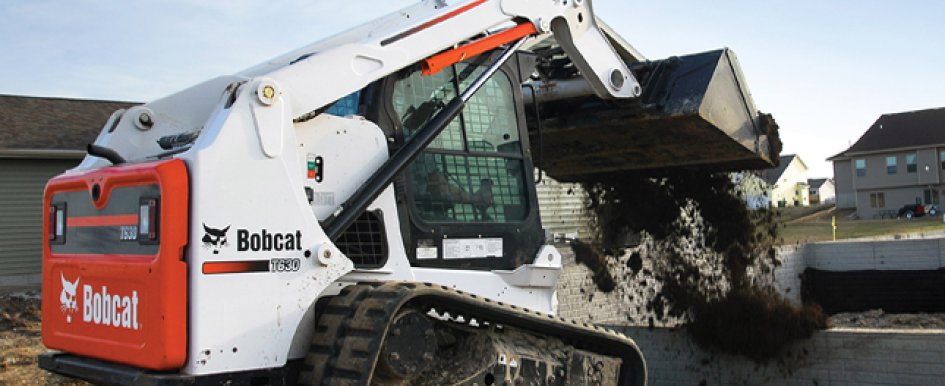
What if you could extend your working season and generate additional revenue? While you can’t control the weather, you can control how you handle what Mother Nature delivers. Few pieces of construction equipment can help you stay productive during more months of the year and provide a greater return on your investment than a compact track loader (CTL).
Today’s CTLs are engineered to perform construction work with more pushing force and higher lifting capacity than the machines of the past, and they can be moved to multiple jobsites quicker than larger track-mounted equipment. With the rising costs of transporting and maintaining equipment, expanding a CTL’s versatility with a variety of different attachments can provide a cost-efficient alternative to moving a dedicated machine to the jobsite.
Superior Mobility
One of the most important advantages of a CTL is its tracks. In many parts of North America, a CTL can add days—or weeks—to a construction contractor’s working year. A CTL’s weight is spread over a wide area, enabling increased flotation and minimal ground disturbance compared to wheeled equipment.
If your jobsites are saturated by frequent rain that creates soft or muddy ground conditions, or if you must be productive in applications that contain sandy soils and granular-type materials, a CTL’s low ground pressure significantly increases its mobility, which means you can potentially begin working earlier in the spring and work later into the fall, depending on your jobsite conditions.

A CTL’s flotation capabilities can also expand your profit by minimizing damage to surfaces, such as lawns, boulevards and previously landscaped areas, resulting in fewer repairs when the job is done. CTLs can also be transported between jobsites more efficiently than a small bulldozer or other larger equipment.
High Utilization
One important fleet objective for construction business owners is to invest in equipment that will make you highly productive and position you to capitalize on new opportunities. CTLs have a unique balance of engine torque and tractive effort to assist firms in a variety of conditions and projects from land clearing and site preparation to utility installation, to pavement construction and restoration.
For businesses that offer grading and leveling services, a CTL provides excellent traction. The machines typically hold a fine grade well for working in concrete flatwork or asphalt sub-base applications. The undercarriage and length of track on the ground also make it easier to move heavier loads, palletized material and paving stones on soft ground.
Track loaders are like skid-steer loaders in regard to hydraulic systems that can power a large range of attachments to expand your core services. However, due to their increased weight and tractive effort, they can provide better performance when working with many ground-engaging attachments. In other situations, the lower ground pressure of a CTL may increase attachment utilization.
In fact, this attachment versatility can virtually eliminate the need to subcontract portions of a larger job, and it can help ease the adjustment to shifting markets or applications.
Attachments can often replace dedicated machines that would cost thousands more in the initial purchase and add greater ownership costs.
Operators can enhance utilization of the machine with attachments in several general or niche construction applications. Flatwork and pavement contractors can bypass the purchase or rental of dedicated machines with the use of attachments including breakers, wheel saws, planers, grader blades, vibratory rollers and rebar benders. General contractors may use a bucket or pallet fork to move material in the morning and switch to a trencher or auger in the afternoon to dig in a small service line or place posts around the jobsite.
The Complete Package
Today’s CTLs represent an investment that is much more comprehensive than a list of specifications. As the economy continues to improve and machines consistently perform in more challenging terrain, your operators will likely spend more time in their machines—and a comfortable operator is a productive one. Machine designs have evolved to accommodate operators and make the purchase of a CTL a long-term investment that can affect employee satisfaction.
Features such as cab enclosures with sound reduction can keep vital senses sharp. Heaters and air conditioners increase an operator’s ability to endure the elements. Air-ride seats and multiple types of control systems that either use foot pedals, hand controls or joysticks to operate the hydraulic functions provide operators greater comfort during the day.
You will be hard-pressed to find a solution that gets more working days out of a calendar year and provides more mobility, versatility or productivity than a compact track loader.
